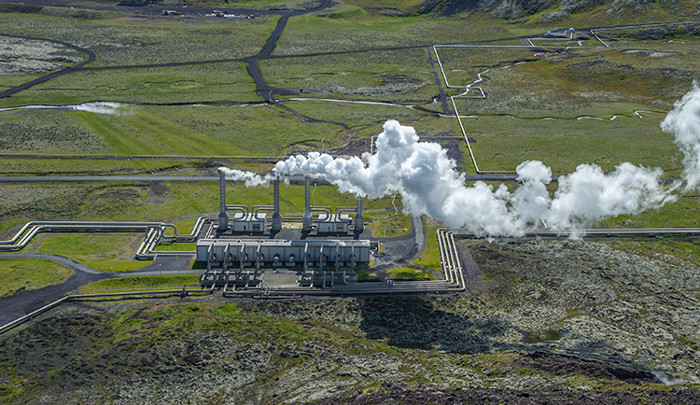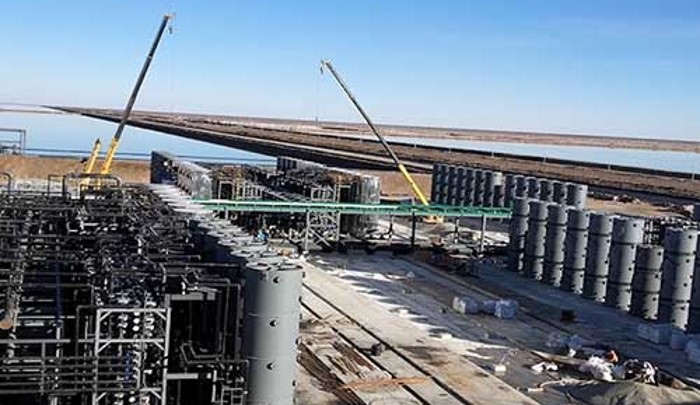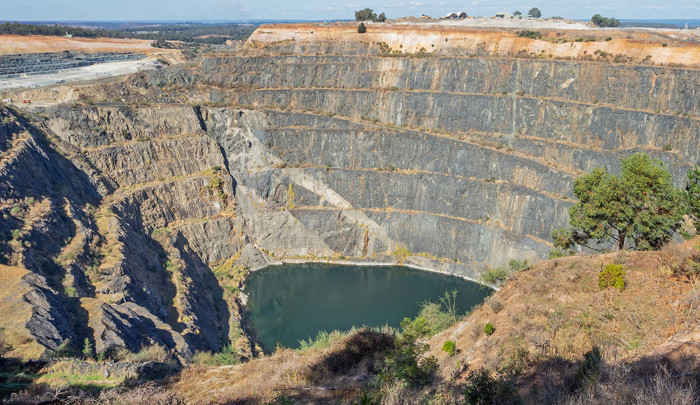Why Geothermal Brines Are the Future of Sustainable Lithium Extraction
Exploring the untapped potential of geothermal brines for sustainable lithium production.
The Hidden Resource Beneath Our Feet
The world is running on lithium - and we’re running out of ways to get it.
Deep beneath our feet, geothermal power plants quietly reshape the energy landscape, drawing heat from the Earth’s core to generate reliable, renewable electricity. But inside those same systems lies something even more valuable than most people realize: geothermal brine, rich in lithium and other critical minerals.
For years, this mineral-laden brine was seen as a byproduct - too salty, too hot, too chemically complex. But today, during a global energy transformation, what was once discarded is becoming one of the most promising new sources of sustainable lithium.
Global demand for lithium is set to outpace supply, driven by the booming electric vehicle and battery storage markets. This looming shortfall has triggered a race for faster, cleaner, and more scalable lithium sources.
We’re at a crossroads: keep digging deeper or look smarter.
That’s where lithium extraction from geothermal brine comes in - not as a compromise, but as a cleaner, more scalable secondary source. This blog explores what geothermal brines are, why they matter, how they compare to conventional lithium sources, and why they may be one of the secret weapons in making lithium both sustainable and secure for the future.
What Are Geothermal Brines - and Why Are They So Valuable?
If you’ve ever visited a geothermal power plant, you’ve seen the clean energy potential bubbling just below the surface. But there’s more going on than meets the eye. Geothermal brines are more than just hot water - they’re highly saline fluids circulating deep underground, where intense heat and pressure cause them to react with the surrounding rock. This unique environment naturally leaches minerals, including lithium, into the brine. The hotter and more geochemically active the reservoir, the richer the brine can become in valuable elements.
Thanks to long-term, high-temperature rock-water interactions, these brines often contain significant lithium concentrations. Some geothermal systems, along with other critical materials, have lithium levels exceeding 200 mg/L.
That’s where things get exciting. Instead of extracting heat to generate electricity, geothermal operators could tap into a second revenue stream: critical minerals used in everything from batteries to semiconductors.
And it’s not just about lithium. Geothermal brines often hold commercially interesting levels of other critical minerals, even trace amounts of rare earth elements. These fluids could turn geothermal plants into dual-purpose operations, delivering both renewable energy and sustainable mineral production without open-pit mining or massive evaporation ponds.
Of course, extracting minerals from geothermal brine isn’t without challenges. High temperatures, scaling, and complex chemistries demand cost-effective and operationally seamless technologies. But the opportunity is clear: a cleaner, more circular use of an existing resource, with infrastructure already in place in many parts of the world.
Geothermal brines have long been considered a byproduct. Now, they’re being recognized as a strategic asset - a hidden reservoir of the critical minerals needed to power the global energy transition.
Why Geothermal Brines Matter - Low-Impact Lithium Extraction
When people think of lithium mining, they often picture open-pit mines or massive evaporation ponds stretching across fragile ecosystems. These traditional methods can be land-intensive, water-hungry, and slow, sometimes taking years to yield usable lithium from brines through evaporation.
Geothermal brine extraction flips that image on its head. It’s a win-win: using what’s already underground in a more innovative, more sustainable way.
Here’s why geothermal lithium extraction is gaining attention as one of the lowest-impact, most future-forward solutions for critical mineral supply:
-
No new land use required
Geothermal power plants already run on closed-loop systems, reinjecting brine into the reservoir after use. Integrating innovative lithium extraction solutions into the existing brine flow enables lithium to be recovered without building new mines or disturbing more land.
-
Minimal water use
Unlike hard rock mining, which can consume up to 118,877 gallons of freshwater per ton of lithium produced, geothermal lithium extraction happens in a closed-loop system. The brine is processed, minerals are removed, and the fluid is reinjected, significantly reducing freshwater demand.
-
Lower carbon footprint
Since geothermal plants already generate renewable electricity and heat, the carbon intensity of extracting lithium from their brine is much lower than mining methods powered by diesel generators or coal-heavy grids.
Research suggests that lithium from geothermal brines can cut battery lifecycle emissions by more than 57% compared to conventional methods.
-
Faster time-to-market
Instead of waiting years for evaporation or permitting complex mining operations, geothermal lithium extraction can be integrated into existing facilities, reducing development timelines and speeding up supply to the battery market.
How Geothermal Lithium Compares to Traditional Mining
Let’s face it - traditional lithium mining has a PR problem. And for good reason.
Whether it’s hard rock mining or evaporation ponds, conventional lithium extraction methods come with a significant toll: massive land use, lengthy lead times, substantial water consumption, and high carbon emissions. As lithium demand surges, so do concerns about the environmental and social footprint of these legacy practices.
In this comparison, geothermal lithium isn’t just greener - it’s a smarter business. For geothermal operators, it offers a pathway to diversify revenue and improve ESG performance, all while using infrastructure that’s already in place and operational.
Let’s break it down:

Lithium Harvest Solution |

Traditional DLE |

Solar Evaporation Brine Extraction |

Hard Rock Mining |
|
|---|---|---|---|---|
| Lithium feedstock | Geothermal brine | Continental brine | Continental brine | Rock / spodumene |
| Project implementation time | 12-18 months | 5-7 years | 13-15 years | 10-17 years |
| Lithium carbonate production time | 2 hours | 2 hours | 13-24 months | 3-6 months |
| Lithium yield | >95% | 80-95% | 20-50% | 40-70% |
| Average footprint per mt of LCE | 61 ft² | 172 ft² | 39,352 ft² | 3,605 ft² |
| Environmental impact | Minimal | Minimal | Soil and water contamination | Soil and water contamination |
| Freshwater consumption per mt of LCE | 22,729 gallons | 26,417 gallons | 118,877 gallons | 20,341 gallons |
| CO₂ footprint per mt of LCE | Neutral | 2.5 tonne | 3.1 tonne | 20.4 tonne |
| Average invested capital per mt of LCE | $17,100 | $62,500 | $34,000 | $60,000 |
| Average cost per mt of LCE | $3,647 | $6,000 | $6,400 | $7,000 |

Lithium Harvest Solution

Traditional DLE

Solar Evaporation Brine Extraction

Hard Rock Mining
As lithium demand surges, geothermal brines emerge as a hidden solution - low-impact, high-reward mineral recovery from a secondary resource already flowing beneath our feet.
Sustainability Advantages - Beyond the Obvious
When people talk about sustainable lithium production, the conversation usually stops at “uses less water.” And while that’s true - and essential - geothermal brine extraction has sustainability advantages that go even deeper.
Let’s unpack what most people don’t discuss.
-
Built-in circularity
Geothermal operations are inherently circular. Brine is brought to the surface, heat is extracted for power, and the cooled brine is reinjected into the reservoir, maintaining reservoir pressure and ensuring long-term sustainability. When lithium recovery is added to this loop, the system remains closed. There are no waste piles, no evaporation ponds, and no depleted aquifers. That’s true circular resource use in action.
-
Dual decarbonization
This isn’t just about green lithium - it’s about stacking climate solutions. Geothermal facilities already help decarbonize electricity grids and district heating. By co-producing lithium, they also support the decarbonization of transportation and energy storage. Few technologies offer such a powerful multiplier effect on the energy transition.
-
Reduced scope 3 emissions for battery makers
Battery and EV manufacturers are under growing pressure to report and cut Scope 3 emissions - the ones generated by their suppliers. Lithium sourced from geothermal brines, powered by renewable energy, and processed using low-carbon methods can dramatically reduce the final product's carbon footprint. This gives downstream customers a real advantage with ESG-conscious investors and regulators.
Discover how our solution can reduce battery lifecycle emissions by 47%.
-
No environmental time bombs
Unlike tailings dams or evaporative salt flats, geothermal lithium extraction doesn’t leave behind long-term environmental liabilities. With no open pits, tailings, or toxic byproducts exposed to air and rain, there’s no risk of leakage, runoff, or disasters. That means fewer permitting headaches and lower long-term risk.
-
Potential for co-product recovery
Many geothermal brines are rich in more than just lithium. Other critical minerals are often present at concentrations that, if recovered efficiently, can turn geothermal facilities into multi-resource producers. This multi-mineral potential adds economic resilience and supports broader critical mineral security.
Ready to Turn Heat into High-Value Minerals?
The world needs more lithium. But it doesn’t need more environmental damage to get it.
At Lithium Harvest, we believe geothermal brines are among the most underutilized assets in the global energy transition. We’ve built a solution to change that.
Our team brings decades of experience in water treatment, separation, and mineral recovery - experience we’ve now applied to the unique challenges of geothermal lithium extraction. By combining proven direct lithium extraction (DLE) technologies with advanced water treatment methods, our solution is built to work seamlessly with real-world geothermal operations, adapting to variable brine chemistries, high temperatures, and existing infrastructure.
We don’t just sell technology - we design, build, own, and operate the extraction units ourselves. This makes it easy for geothermal operators to generate new revenue streams with minimal operational disruption. Think of it as plug-and-play mineral recovery that fits right into your current process without compromising energy generation or reservoir integrity.
The result? A more sustainable and profitable geothermal operation - one that not only powers the grid but also fuels the battery supply chain.

Geothermal Brine Extraction
You may also be interested in: